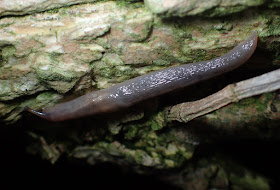Anyway the weekend was for WeBS which I accomplished. Nice Little Egret on the lovely Loch of Sabiston, a Blackwit on Bosquoy and a pile of ducks to be sifted through to no significant avail.
Distant Little Egret.
Little Egret is still a decent find here, this was the first county record this year.
Of course I was also delving around for smaller critters. Wandering around the fields and extracting from litter, plus a few pitfall traps produced a nice variety of beetles, adding Loricera pilicornis, one of my favourite Carabidae to the year list for the 1000/1000 square.
I'm really enjoying the challenge of tackling the Staphilinidae and Mike Hackston's keys are just brilliant https://sites.google.com/site/mikesinsectkeys/Home/keys-to-coleoptera/staphylinidae . I do need to purchase the two available Handbooks for the Identification of Bristish Insects but Mike's work has made these animals so much more accessible. The litter extractor (a garden seive and a white washing up bowl plus an application of WD40) is a great source of these animals, as are pitfall traps which I have recently begun to set just a few of in the garden. I can identifiy most of the more frequent Carabidae alive but Staphs I need to get still under the microscope, and in any case finding them without trapping or extracting would be close to impossible.
I think this is a Bledius sp, surely sub family Oxytelinae anyway.
Pretty confident this is Megarthrus depressus. One previous county record.
Both of these found in the garden.
Since aquiring the cranefly key I've only found one species, the winter gnat Trichocera regelationis, it's very common, turning up in pitfall traps, coming to light and just being around. Another challenge I'm looking forward to as the winter turns is identifying these..
And spring is surely approaching, Oystercatcher, Mute Swan, Coot, and now in the last week, Shelduck have all appeared on The Shunan, Tufted Duck are there daily as well.
Hoy Hills from near the garden.
Another project this year is to find as many species as possible in our "Wee Wood". This is the tiny strip of trees 20 metres by 5 metres that we own, half way down the track.
Wee Wood.
The trees are Wych Elm and Elder, far left and then Sycamore. There is a wet ditch between the road and the trees and a stone dyke "wall" on its southern boundary. It contains quite a bit of fallen wood, as well as a bit of rubbish, bits of electrical transmission waste etc which I'm not removing because some of this provides the best, or at least the most accessible to me, beetle habo.
Torchlit visits often produce surprises, the other night the Elder had a good few Tree Slug on it.
Lehmannia marginata.
This slug I find in many locations but is as yet unidentified. It is suggested that it is a juvenile Arion, but I'm not convinced it is juvenile as I never find larger ones.
A very attractive beast whatever it is.
I sorted out the MV trap and ran it for a few hours, until the Moon rose the other (exceptionally warm) evening. Even in Orkney other folk are capturing moths but the best I could manage were winter gnats, slugs and a single Aphodius beetle which I suspect will turn out to be, if my memory serves me correctly, rufus.
Anyway, my short break was completed by a flight to Aberdeen with Louise as we headed for the neurology dept. Completely amazing surgery through a tiny hole drilled in Louise's skull rearranging the trigeminal nerve and insulating it with Teflon, whilst shoving the pesky artery and vein which have been tangling with the nerve out of the way. It was all somewhat traumatic but thanks to the brilliance of the surgeon, the anaesthetist and the rest of the surgical team and the subsequent support and care of a whole team of staff on the ward, there has been a successful outcome. Pain gone. (Pain is a bit of an understatement, you have to try to imagine the very worst pain that could occur, something like razorblades shoved into your mouth and twisted repeatedly.) Years of taking drugs to control epilepsy in increasing quantities and to increasingly reduced effect have hopefully ended. (Toes, fingers, ears, eyes and speech all work, Louise is battered and bruised from the four hour op, and a little fragile but otherwise fine.)
Bridge.
Bob (on the pony).
Sweets.
Doughnuts.
Burray with Barriers 3 and 4.













No comments:
Post a Comment